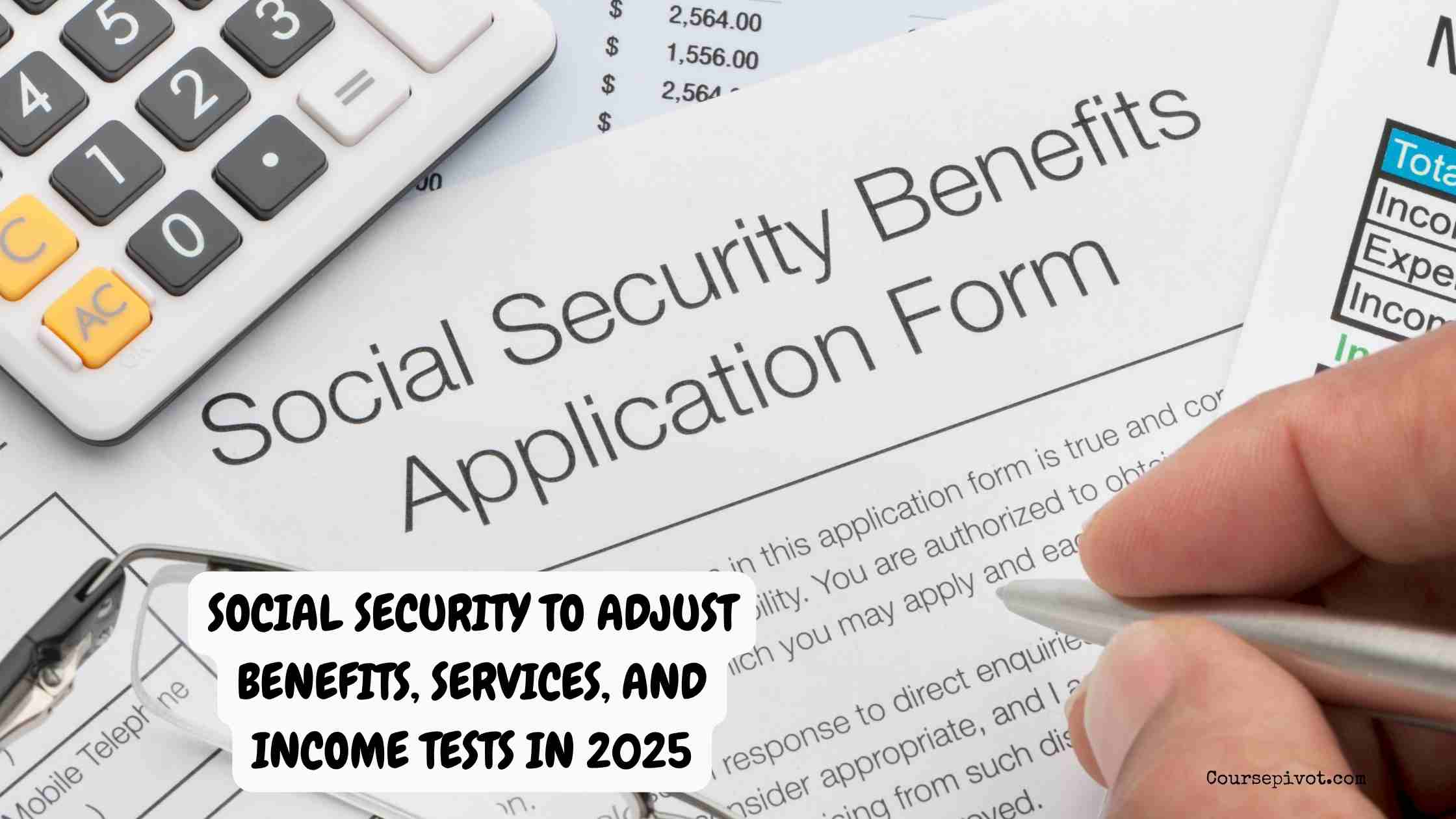
Social Security Adjustments to Benefits, Services, and Income Tests in 2025
Social Security is a lifeline for millions, and its annual adjustments shape how beneficiaries and workers plan their finances. I’ve followed these changes closely, noting how they impact retirees, workers, and families. Understanding Social Security’s adjustments to benefits, services, and income tests in 2025 is crucial for staying informed. In this article, I’ll outline five key changes for 2025, drawn from my research and reliable sources like the Social Security Administration (SSA). These insights clarify what’s new. Let’s dive into how Social Security is adjusting in 2025 to help you prepare.
Table of Contents
Ever wondered how Social Security keeps up with rising costs? Each year brings tweaks that affect your wallet. Ready to explore five adjustments for 2025?
Social Security evolves with the economy. I’ve seen these updates make a real difference for retirees. Let’s uncover what’s changing in benefits, services, and income tests this year.
1. 2.5% Cost-of-Living Adjustment (COLA)
Social Security benefits will increase by 2.5% in 2025 to counter inflation. This is a major adjustment to benefits. I’ve seen how these boosts help retirees afford essentials.
- Who’s affected. Over 72.5 million Americans, including 68 million Social Security beneficiaries and 7.5 million Supplemental Security Income (SSI) recipients.
- Payment timeline. Social Security benefits rise in January 2025; SSI payments increase December 31, 2024.
- Impact. The average retiree’s monthly check rises from $1,927 to $1,976, adding about $50. Couples see an average increase of $75, from $3,014 to $3,089.
Why this matters? The COLA, tied to the Consumer Price Index for Urban Wage Earners (CPI-W), preserves purchasing power, though some note it may lag actual inflation.
2. Increased Earnings Test Limits
Income tests for working beneficiaries under full retirement age (FRA) will adjust in 2025. This is a key change to income tests. I’ve noticed these limits affect early retirees who work.
- Under FRA all year. The earnings limit rises to $23,400 (from $22,320). For every $2 earned above this, $1 in benefits is withheld.
- Reaching FRA in 2025. The limit increases to $62,160 (from $59,520), with $1 withheld for every $3 over. No limit applies after FRA.
- Example. Earning $40,000 under FRA reduces benefits by $8,300 ($40,000 – $23,400 ÷ 2).
Why important? Higher limits allow more earnings before benefit cuts, but overearning risks repayments if not reported.
3. Higher Taxable Wage Cap
The maximum earnings subject to Social Security payroll tax will increase in 2025. This is a significant adjustment to income tests for workers. I’ve seen this impact high earners most.
- New cap. The taxable maximum rises to $176,100 (from $168,600).
- Tax rate. Remains 6.2% for employees (12.4% for self-employed), capping contributions at $10,918 for high earners.
- Impact. Workers earning above $176,100 pay no additional Social Security tax beyond this, but it boosts future benefits.
Why does it matter? The cap, tied to wage growth, ensures higher earners contribute more, strengthening the system.
4. Simplified COLA Notices and Online Access
The SSA is improving how beneficiaries receive COLA information. This is a notable adjustment to services. I’ve appreciated how digital tools make managing benefits easier.
- New notices. A redesigned, one-page COLA notice uses plain language, showing exact benefit amounts and deduction dates.
- Online access. Notices are available in December 2024 via my Social Security accounts. Sign up by November 20, 2024, for online access.
- Options. Choose email, text, or both for notifications in the Message Center.
Why this change? Clear, accessible notices empower beneficiaries to plan. Online accounts enhance convenience and security.
5. Work Credit Requirement Increase
Earning Social Security credits for benefits will require higher income in 2025. This is a final adjustment to income tests. I’ve seen how this affects part-time workers or caregivers.
- New threshold. One credit requires $1,810 in earnings (up from $1,730). Four credits (maximum per year) need $7,240 (up from $6,920).
- Eligibility. 40 lifetime credits (about 10 years) are needed for retirement benefits.
- Impact. Low earners may need to work more to qualify, affecting caregivers or part-timers.
Why significant? Higher thresholds align with wage growth but may delay eligibility for some, requiring careful planning.
- Read our blog on Arguments That Supporters and Opponents of Wealth Tax Make
What’s Next for You
Knowing how Social Security will adjust benefits, services, and income tests in 2025 is like getting a roadmap for financial planning. I’ve been struck by how these changes, from COLA boosts to digital notices, touch millions of lives. These five adjustments—2.5% COLA, higher earnings tests, increased wage cap, simplified notices, and work credit changes—shape benefits and contributions. Staying informed helps you maximize your benefits. Will you ignore these updates, or plan smarter for 2025?
Here’s how to prepare:
- Check your benefits. Log into your my Social Security account to view your 2025 COLA notice.
- Estimate earnings. If working and under FRA, report earnings to avoid benefit reductions.
- Learn more. Visit www.ssa.gov for details on taxes, credits, and services.
Social Security is your safety net. What’s changing in 2025 affects your future. Start today to stay ahead.
Cite this article
You can copy and paste your preferred citation format below.
Martin, L. & Arquette, E.. (2025, May 30). Social Security Adjustments to Benefits, Services, and Income Tests in 2025. Coursepivot.com. https://coursepivot.com/blog/social-security-to-adjust-benefits-services-and-income-tests-in-2025/



